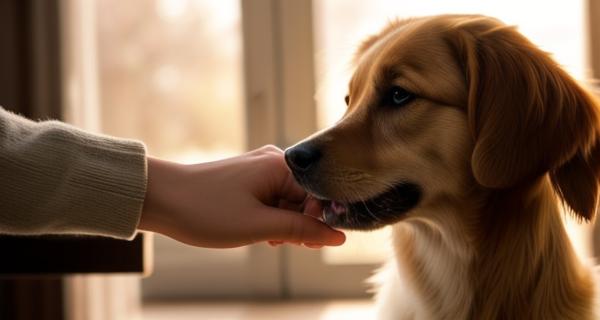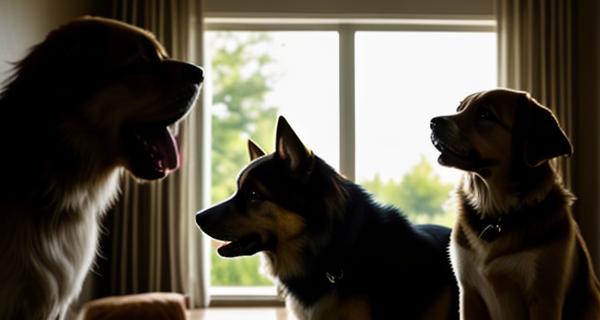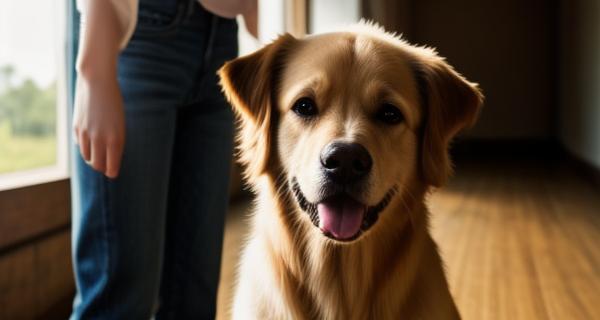Step-by-Step Guide to Introducing Your Dog to a New Puppy
Introducing Dogs to Puppies
Introducing dogs to puppies can be a joyful experience, but it requires careful planning and patience to ensure a harmonious transition. A rushed introduction can cause stress and potential conflict, so a step-by-step approach is key.
**Phase 1: Scent Introduction (Days 1-3)**
Begin by swapping scents. Let each dog sniff a blanket or toy that the other has used. This allows them to become familiar with each other’s presence without direct interaction.
**Phase 2: Controlled Visual Introductions (Days 4-7)**
Keep the dogs separated behind a barrier like a crate or baby gate. Short, supervised visual introductions allow them to see each other without direct contact. Observe their body language closely. Relaxed postures, wagging tails, and playful bows are positive signs. Stiff bodies, growling, or tense postures indicate stress and require more separation.
**Phase 3: Supervised Interactions (Days 8-14+)**
Once they seem comfortable with visual introductions, allow short, supervised interactions in a neutral space. Keep them on leashes initially to maintain control. Reward calm, friendly behavior with treats and praise.
**Important Considerations:**
* **Separate Feeding:** Feed dogs in separate areas to avoid resource guarding.
* **Individual Attention:** Ensure both dogs receive individual attention and playtime.
* **Supervision is Key:** Never leave them unsupervised until you’re confident they’re comfortable together.
* **Manage Expectations:** It may take time for them to fully accept each other. Be patient and consistent.
If you observe persistent aggression or anxiety, consult with a professional dog trainer or behaviorist. A slow, steady approach is always best for a successful integration.
Step-by-Step Guide
## Step-by-Step Guide: Introducing Your Dog to a New Puppy
Bringing a new puppy home is exciting! But a successful introduction to your resident dog takes patience and a careful, step-by-step approach. Rushing things can lead to stress and potential conflict. Here’s how to make the transition smooth for everyone.
**Phase 1: Scent Introduction (Days 1-3)**
Keep the dogs separated initially. Allow them to sniff each other under the door or through a crate. This lets them get acquainted with each other’s scent without direct interaction. Switch bedding between them to further familiarize them.
**Phase 2: Controlled Visual Introductions (Days 3-7)**
Controlled, brief visual introductions are key. Start with the puppy in a crate, allowing your resident dog to approach (on leash!). Keep these sessions short and positive. Reward calm behavior with treats and praise. If either dog shows signs of stress (whale eye, stiff body, growling), end the session immediately and increase the distance.
**Phase 3: Supervised Interactions (Days 7-14+)**
Gradually increase the duration and frequency of supervised interactions. Keep both dogs on leash initially, allowing them to explore a shared space. Monitor their body language closely. Look for relaxed postures, wagging tails, and playful bows. If tensions arise, separate them immediately.
**Phase 4: Off-Leash Exploration (14+ days)**
Only when both dogs consistently display relaxed body language and positive interactions should you allow off-leash playtime. Supervise closely, and be prepared to intervene if necessary.
Remember, consistency and positive reinforcement are crucial. Celebrate small victories and be patient. If you’re struggling, consult with a professional dog trainer or behaviorist.
Dog-Puppy Introduction
Dog-Puppy Introduction
Bringing a new puppy into your home is exciting! But a successful introduction to a resident dog requires patience and a well-structured plan. Rushing the process can lead to stress and potential conflicts. Here’s a step-by-step guide to ensure a smooth transition.
**Phase 1: Scent Introduction (Days 1-3)**
Before they even meet, allow them to get used to each other’s scent. Swap bedding or toys between the dogs. This helps them become familiar without direct interaction. Supervise these exchanges and watch for relaxed body language.
**Phase 2: Controlled Visual Introductions (Days 3-7)**
Keep the dogs separated initially, perhaps in adjacent rooms with a closed door. Feed them on opposite sides of the door, gradually moving closer as they eat calmly. Short, supervised visual introductions are key. Keep the puppy on a leash and be ready to intervene if either dog shows signs of stress (stiff body, growling, excessive staring).
**Phase 3: Leashed Interactions (Days 7-14)**
Once they seem comfortable with visual contact, allow brief, leashed interactions in a neutral space. Keep the leash loose and reward calm behavior with treats and praise. Short, positive experiences are better than long, overwhelming ones.
**Phase 4: Off-Leash Supervision (Days 14+)**
Only after consistent positive leashed interactions should you allow off-leash playtime, and only under close supervision. Continue to monitor their body language closely. Provide separate spaces for each dog to retreat to if they need a break.
Remember, every dog is different. Be patient, observant, and prioritize positive reinforcement. If you notice persistent aggression or anxiety, consult with a qualified professional dog trainer or behaviorist.
Introducing a New Puppy
## Step-by-Step Guide to Introducing Your Dog to a New Puppy
Bringing a new puppy home is an exciting time! But a smooth introduction between your resident dog and the little one is crucial for a happy, harmonious household. Rushing the process can lead to stress and potential conflict, so patience is key.
**Phase 1: Scent Introduction (Days 1-3)**
Before they even see each other, let them get acquainted through scent. Swap blankets or toys between the dogs so they can familiarize themselves with each other’s smell. This helps reduce initial anxiety.
**Phase 2: Controlled Visual Introductions (Days 3-7)**
Keep them separated initially, perhaps in adjacent rooms, allowing them to sniff under the door. Short, supervised visual introductions are next. Start with brief glimpses, keeping both dogs on leash and at a distance where they remain calm. Reward calm behavior with treats and praise.
**Phase 3: Supervised Interactions (Days 7-14+)**
Gradually increase the duration and frequency of supervised interactions. Start with short play sessions in a neutral area. Watch for body language cues – relaxed postures, wagging tails, and playful bows are good signs. If you see signs of stress (stiff body, growling, lip lifting), immediately separate them.
**Important Tips:**
* **Maintain control:** Always keep both dogs on leash during initial interactions.
* **Provide separate resources:** Ensure each dog has its own food, water, and safe space.
* **Positive reinforcement:** Reward calm, friendly behavior with treats and praise.
* **Don’t force it:** Let them set the pace. If they’re not comfortable, take a step back.
* **Seek professional help:** If you’re struggling, consult a certified dog trainer or behaviorist.
A slow, steady introduction sets the foundation for a lifelong friendship!





Post Comment
You must be logged in to post a comment.